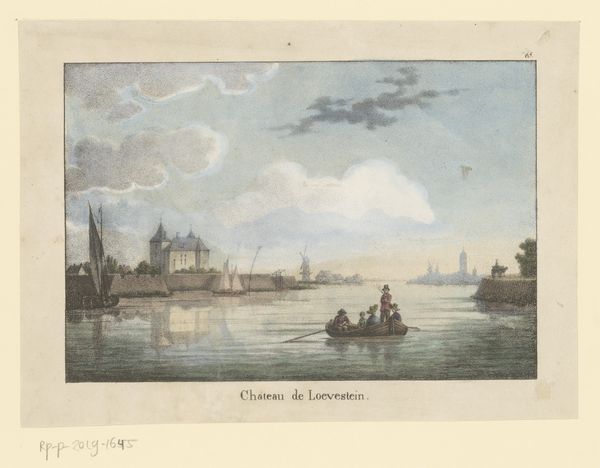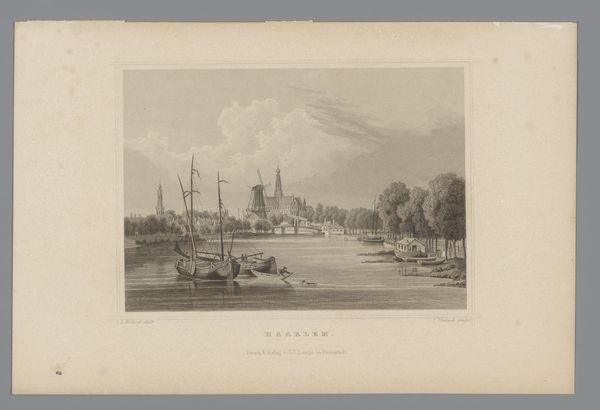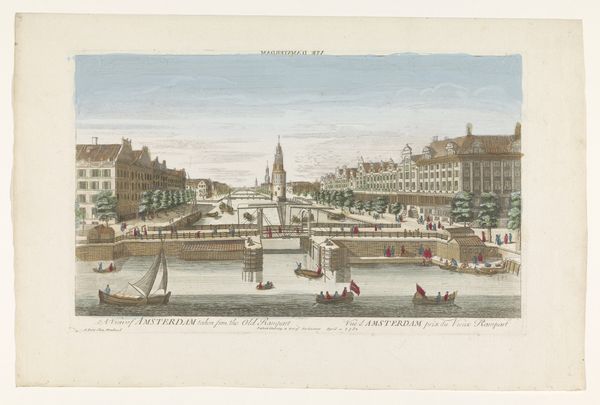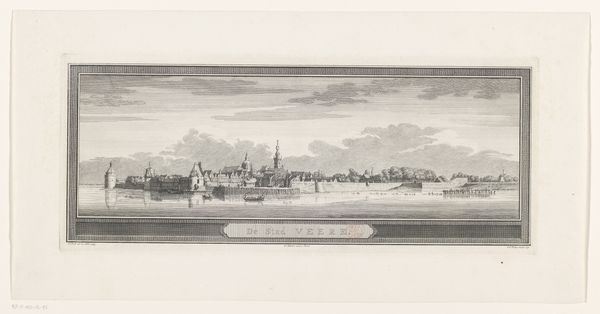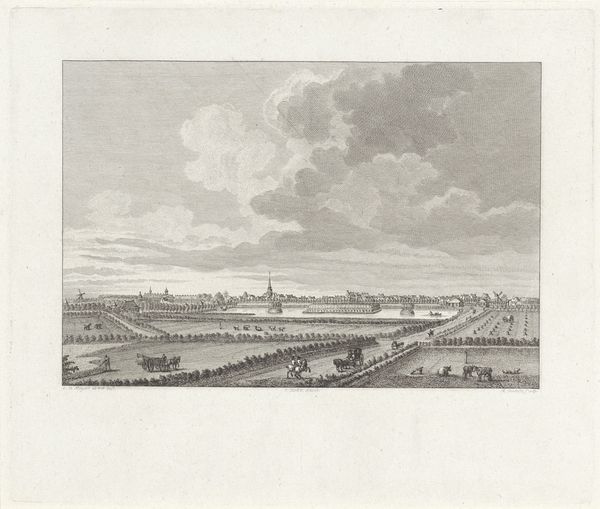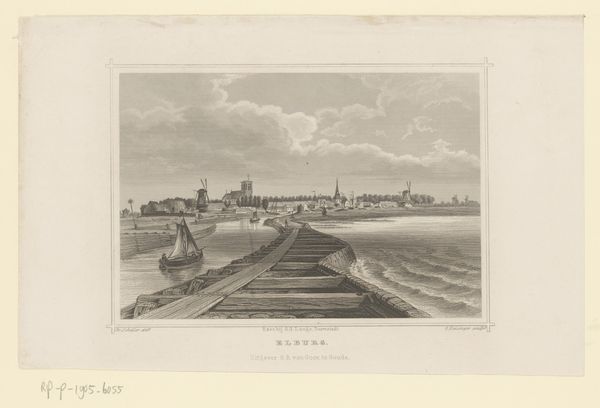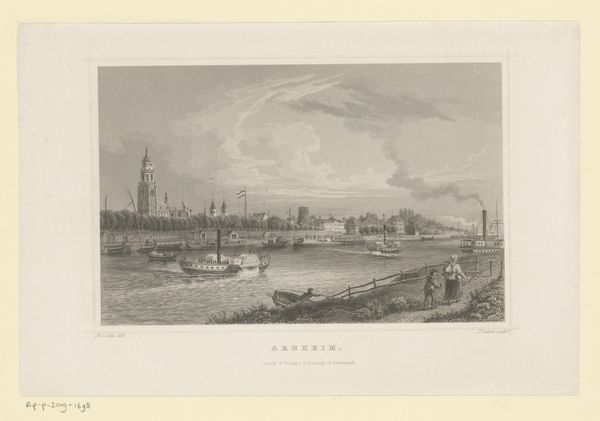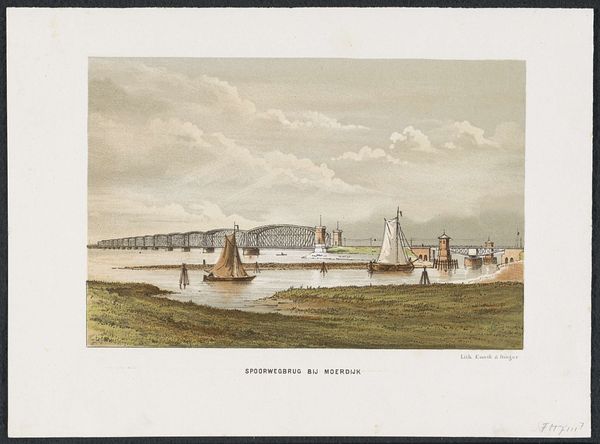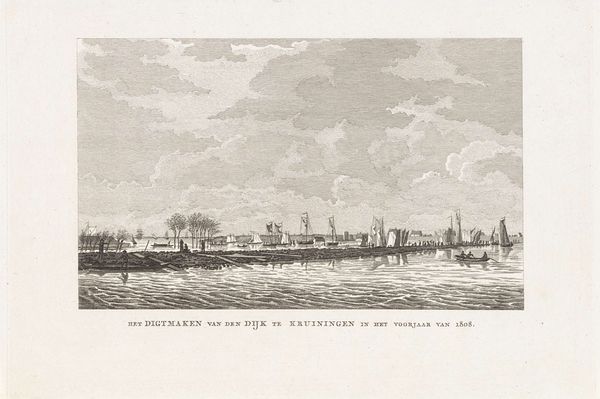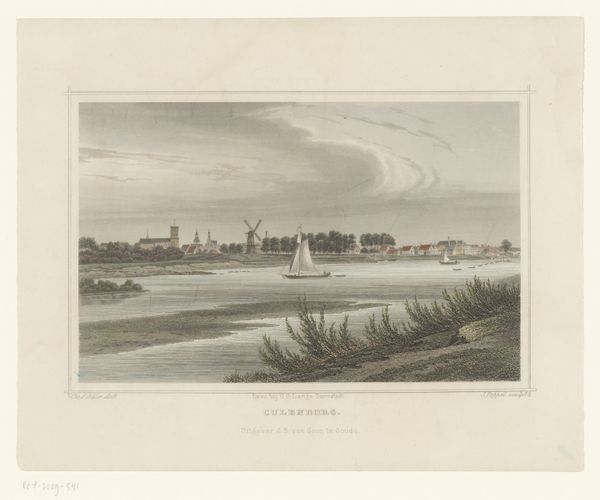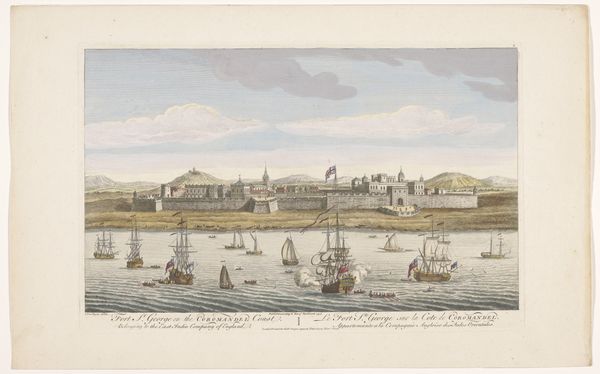
painting, watercolor
#
painting
#
landscape
#
perspective
#
watercolor
#
romanticism
#
cityscape
#
watercolor
Dimensions: height 538 mm, width 697 mm
Copyright: Rijks Museum: Open Domain
Editor: This is "Gezicht op Hamburg," a watercolor painting, its dates span from 1794 to 1870 by Leopold Beyer. It’s quite striking – the detail in the cityscape is amazing, but there’s also this sense of stillness, like a scene from a play. What aspects stand out to you, looking at it through the lens of art history? Curator: What I find fascinating is how this image participates in constructing Hamburg’s identity during a period of significant political and economic change. These picturesque views were very popular. They catered to a rising middle class who were keen to assert their belonging and cultural sophistication through art. Think about how cityscapes were used to promote civic pride and attract investment. Does this feel like propaganda? Editor: I wouldn’t have thought of it that way initially. It feels too… peaceful, maybe? Like a postcard. But now that you mention it, focusing on the orderliness, that definitely sells an idea of stability. Curator: Precisely. And consider where something like this might have been displayed. Perhaps in a merchant’s home or even in a public office, subtly reinforcing a particular vision of the city. Do you notice any signs of poverty or dissent? Where does Beyer invite the viewer's gaze? Editor: I see only a few figures, strolling, and there’s no sense of industry or working people, mainly a skyline dominated by church spires. Curator: Exactly. So it presents an idealized view that shapes perceptions of Hamburg, deliberately excluding elements that might disrupt the harmony. Remember that art always has a public role, intentional or otherwise. The artist's hand and their context can promote imagery which excludes some people to benefit others. Editor: It’s amazing how much context shifts the perspective on something so seemingly straightforward. I will definitely carry these kinds of considerations in mind when assessing art. Thanks! Curator: Indeed! Paying attention to what's included and excluded offers great insight to the intentions behind an artist's creation.
Comments
No comments
Be the first to comment and join the conversation on the ultimate creative platform.

